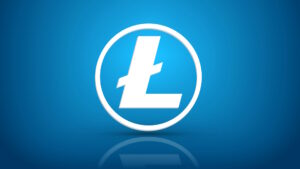The United States inflation rate just hit a 13-year high, something which central bank-affiliated economists argue is ‘temporary’ due to a supply shortage.
Of course, anyone with average intelligence knows that the new inflation figures come as no surprise given the massive stimulus that took place since covid.
The sheer size and scope of money printing has impacted nearly every tradeable asset, including property, stocks, startup investing, cryptocurrencies etc. Equities have roared to all time highs, with the S&P 500 up 95% since the March 2020 lows.
The question is: has anything really changed that should make these companies more valuable?

As the money printer steam rolls ahead, equities resemble a casino, penny stocks or most altcoins more than an investment, with AMC and GME stocks gaining massive traction for no apparent reason other than advanced ‘memetics’ and engineered psyops plays. There’s always a narrative somewhere that the r/wallstreet subreddit can circle around.
Such things are prevalent due to the unfathomable amounts of cash sloshing about in financial markets.
Cryptocurrencies aren’t going away. Buy Bitcoin here.
Fed Moves the Goalposts
As is customary, the US Federal Reserve recently changed its language on inflation, switching its 2% inflation target commitment with “seeking to achieve inflation that averages 2% over time.”
The move is a notable departure from the previous method of adjusting targets depending on the underlying economic conditions. Monetary policy under ‘inflation targeting’ was symmetric, i.e. the Fed would respond equally to overshooting and missing targets.
Instead, the Fed is now implementing an ‘average inflation’ policy, which means that policymakers would consider deviations and allow inflation to run above the target in order to makeup for prior shortfalls, or vice versa.
Former US Treasury Secretary Larry Summers, who was a candidate to run the Federal Reserve weighed in on this change recently:
“We’re taking very substantial risks on the inflation side……The sense of serenity and complacency being projected by the economic policymakers, that this is all something that can easily be managed, is misplaced.” – Larry Summers (Former US Treasury Secretary)
In disregarding these warnings and pursuing this ‘average inflation’ policy, the Fed is signalling that it’s doesn’t consider inflation concerns. It will retain extremely low interest rates for now, while simultaneously buying $120 billion per month in bonds.
“The Fed’s idea used to be that it removed the punchbowl before the party got good….now, the Fed’s doctrine is that it will only remove the punchbowl after it sees some people staggering around drunk… We are printing money, we are creating government bonds, we are borrowing on unprecedented scales…” – Larry Summers
Still, Fed officials have led the consensus view of most central banks around the world, insisting that rising inflation (i.e. consumer price hikes for typical but non-exhaustive goods) will calm as the economy fully reopens. But if people expect prices to increase, coupled with supply-side shortages and disintegrating trust in fiat money, then this could easily spiral into a self-fulfilling prophecy as expectations and reality coincide.
Inflation is Not Evenly Distributed
If wages kept up with inflation, then it wouldn’t be the end of the world. Costs would rise but so too would salaries, which means that nothing really changes besides the increasing unit of account. But despite the economic theories which espouse relative parity, inflation is not even. In the 1970s, when inflation was especially pronounced, wages failed to keep up with an increasing Consumer Price Index (CPI). In this case, we’re using the US as a standard, but more examples can be found under any other central banking jurisdiction.

This meant that the Fed’s actions resulted in a real loss of purchasing power for US workers – i.e. people literally became poorer. One reason for this is that wages are far more ‘sticky’ in comparison to consumer prices, which adjust more readily. As a result central bank meddling, all sorts of price distortions and unforeseen consequences get exacerbated.
Bitcoin and Inflation
Bitcoin came out of the ruins of the great financial crisis in 2008. It was introduced as an antidote to bad central banking policies which inadvertently favoured those closest to the money printers. In 2020, policymakers completely abandoned any reasonable long-term thinking and pushed quantitative easing policies into overdrive.
In 2021, these policies show little signs of stopping. Just last week, the Biden administration announced a $6 trillion budget message, signalling to financial markets that deficits effectively do not matter any more. This comes over and above the $9 trillion the Fed pumped to primary dealers in 2020, leveraging unfathomable amounts of repo operations to create 22% of the entire US Dollar market in a single year.
The Fed’s portfolio is expected to balloon to $9 trillion by the end of 2022, according to new official projections.

US authorities are not alone in this race to print money at exponential rates. Since covid, the European Central Bank (ECB), has extended easing measuring and asset purchases to an even greater degree (per the above chart), all the while signalling that more money is needed. In fact, every major central bank is borrowing money at record levels (and low interest rates), all the while investors are expected to contend with low or negative-yielding bonds.
The below chart shows implied path of US interest rates based on FED Funds pricing against the real path of interest rates. As you can see, the ‘smartest’ people in the room have no idea what the future holds.

The question is: Why do Central Bankers Get it Wrong?
Simple, there is first and foremost, a data problem. One single centralised authority cannot account for and process all information, let alone react in time to navigate the ship through unknown waters. The prevailing facade of confidence of central bank decision making breaks down in the face of uncertainty, white and black swan events, unknowns, knowledge gaps and reality itself. Throughout history, central bank planning has both reliably missed targets while creating a slew of unintended consequence.
In order to operate effectively, central banks would need trillions of data points every day, and process this data in a perfect way to have better odds at being successful. This is impossible, as how can you integrate every single Big Mac purchase by a white or blue collar worker and the billions of in-app purchases into one perfect system? (Aside from the fact that history tells us that it’s undesirable to have one all-seeing entity knowing all your purchase history).
Central banks were born out of a deep human insecurity about the unknown, and a desire to make sense of the world. We want to feel like there is someone taking the decisions for us in this complex and chaotic environment where billions of people interact and trade. This desire has led us to give up the reins of financial control to people who we believe know better. The truth is they do not know and could not know for the reasons just explained.
What happens next?
One classic example which echoes today’s conditions is the chart of Weimar Germany, whereby the price of the German Mark entered a parabola against gold in the 1920s. If you plot bitcoin on this chart, you begin to appreciate what eventually happens when the money printer goes out of control as is the case today.

However, this chart does not represent volatility during the hyper-inflationary period. Intense draw-downs like the 54% drop bitcoin just witnessed are all part of the bigger picture.
Bitcoin was created as an uncorrelated asset that protects individuals from the recklessness of financial elites. Everyone who bought the top in 2017 experienced major draw-downs, yet is still better off today by over 79% (at the time of publishing).
Today, the world is passing through the largest money printing operation ever seen in the history of humanity, and bitcoin is the only uncorrelated asset which was built for this exact situation. It is the only way out.
Read More: Redefining legacy finance – a Bitcoin story
Subscribe to the semi-weekly newsletter for regular insight into bitcoin and crypto. Go on. It’s free.
Join the telegram channel for updates, charts, ideas and deals.
Did you like the article? Share it!


